Speaker
Description
The Spanish Aerobiology Network (REA) was funded in 1992 (http://www.uco.es/rea/). This is an academic-research network, comprising teaching and/or research staff specialising in different scientific areas, i.e., Botany, Mycology, Palynology and Atmospheric Dynamics. This is a Technical Network within the Spanish Aerobiology Association (AEA) since the Association was formed in 1995 (http://www.aea.aerobiologia.org/). The REA is involved in the European Aeroallergen Network (EAN) https://ean.polleninfo.eu/Ean/, at the HNO-Klinik, University of Vienna, Austria. On the other hand, REA is based on a federated network where different regional networks are working closely with the Health or Environment Councils https://www.uco.es/investiga/grupos/rea/?page_id=22: Andalusia Aerobiology Network (RAA), Aragon Aerobiology Network, Asturias Aerobiology Network, Balearic Islands Aerobiology Network, Cantabria Aerobiology Network, Castilla la Mancha Aerobiology Network (AEROCAM), Castilla y Leon Aerobiology Network (RACYL), Cataluña Aerobiology Network (PIA), Extremadura Aerobiology Network (AeroUEx), Galicia Aerobiology Network (RIAG), Community of Madrid (PALINOCAM) Aerobiology Network, Region of Murcia Aerobiology Network, Navarra Aerobiology Network, Aragon Aerobiology Network and País Vasco Aerobiology Network.
From the beginning, REA has been involved in the development of a standardised methodology, following the EAN Minimum Requirement in the methodology for Routinely Performed Monitoring of Airborne Pollen Recommendations (Jäger, 1995). This methodology has been validated and published in different papers that have also supported the publication of the REA Management and Quality Manual (Galán et al., 2007). REA is also involved in different quality control inter-laboratory surveys for proficiency testing, trying to determine the performance of technician staff for reading slides (Oteros et al. 2013), and has been involved in different inter-laboratory surveys and exercises, in the frame of the Working Group of Quality Control from the European Aerobiology Society (EAS) http://www.eas-aerobiology.eu/. Results from these external exercises have made possible the publication of different papers for improving Quality Control, i.e., the minimum requirements and reproducibility of pollen (Galán et al 2014) and fungal spores (Galán et al 2021) monitoring in Europe; inter-laboratory ring tests for counting pollen with similar morphology, as an education process for aerobiologists (Sikoparija et al 2017); and, recently, the use of virtual slides to facilitate it (Smith & Sikoparija, 2020). Members of REA are also members of the Air Quality working group of the Spanish Standardization Association (UNE), being involved in the French Standardization Association (AFNOR) for working in the Working Group on Legislation. Today we count with the European standard norm on Ambient Air- sampling and analysis of airborne pollen grains and fungal spores for networks related to allergy- Volumetric Hirst method (EN 16868) and starting to work on a Technical Specification (TS) to define the standard, requirements, and procedures for pollen and fungal spores automatic monitoring.
REA members use the Hirst type volumetric spore trap (Hirst 1952) for pollen and fungal spore monitoring, following the minimum requirements proposed by the EAS and EAN. Members collect the samplers on Monday and send the data on Wednesday to the coordinating center, located in the University of Cordoba, Spain. Data are automatically entered into the National Database, using a file created for each sampling site. Data is disseminated on the web https://www.uco.es/rea, and in the App “Polen REA” (in Spanish) https://www.uco.es/investiga/grupos/rea/?page_id=310, which can be downloaded by Google Play and by Apple Store. Authorized staff at the REA Coordinating Centre send the data to the European Aeroallergen Network; this information is weekly updated at www.polleninfo.org. Members from the Coordinating Centre have also participated in the Spanish translation for the Pollen-App ttps://pollendiary.com/Phd/, where allergy patients can record their daily allergy symptoms and these data can be compared with the actual pollen concentrations of the main allergenic plants.
REA has developed a model for pollen forecasting. This is a statistical model using real pollen data assimilation for continuous execution with daily surface concentrations. It uses time series analysis in combination with the influence of different meteorological parameters, such as precipitation, to predict atmospheric pollen in the short term. Also uses different geostatistical techniques and climatic influence to calculate the concentration of pollen in the air at any point in our geography. REA also participates in both, training and validation, through the European Aeroallergen Network (EAN) for other European models, e.g., SILAM, COPERNICUS models… Today, REA belongs to the AutoPollen Program, in agreement as a third party, and the coordinator is chair of the WG on Quality Control. Nowadays some REA members are working on automatic pollen and spore monitoring using instruments based on different technologies, i.e., image recognition or fluorescence. It is a new step in REA to participate in the future European automatic pollen monitoring network using high temporal-resolution real-time measurements (AutoPollen: https://www.eumetnet.eu/activities/miscellaneous/current-activities-mi/autopollen/)
Today the REA has the status of a National Pollen Allergy Prevention Service. However, even when the main research application is focused on atopy or asthma, some research projects are related to agriculture, forestry, green urban spaces, and modelling.
REFERENCES
1. Galán, C; Cariñanos, P., Alcázar P. & Dominguez-Vilches, E.. 2007. REA Management and Quality Manual. Servicio de Publicaciones de la Universidad de Córdoba, Spain. 59 páginas (ISBN 978-84-690-6353-8).
2. Galán, C., Smith, M., Damialis, A., Frenguelli, G., Gehrig, R., Grinn-Gofroń, A., Kasprzyk, I., Magyar, D., Oteros, J., Šaulienė, I., Thibaudon, M., Sikoparija, B. & EAS QC Working Group. 2021. Airborne fungal spore monitoring: between analyst proficiency testing. Aerobiologia, 37(2), 351-361
3. Galán, C., M. Smith, Thibaudon, M., Frenguelli, G., Oteros, J., Gehrig, R., Berger, U., Clot, B., Brandao, R. & EAS QC Working Group. 2014. Pollen monitoring: minimum requirements and reproducibility of analysis. Aerobiologia, 30:385–395
4. Hirst, J.M. 1952. An automatic volumetric spore trap. Annals of Applied Biology, 39(2): 257–265
5. Jäger, S. 1995. Methodology for routinely performed monitoring of airborne pollen recommendations. Aerobiologia, 11:69–70
6. Oteros, J., Galán, C., Alcázar, P. & E. Domínguez-Vilches. 2013. Quality control in bio-monitoring networks, Spanish Aerobiology Network. Science of the Total Environment, 443:559–565.
7. Sikoparija, B., Galán, C., Smith, M. & EAS QC Working Group. 2017. Pollen-monitoring: between analyst proficiency testing. Aerobiologia, 33(2), 191-199
8. Smith, M. & B. Sikoparija. 2021. Interlaboratory proficiency test in aerobiology using virtual slides – feasibility study. Grana, 60:132-145

